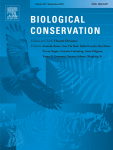
I was quite startled to read this tweet about the continuing crash in Willow Tit numbers in the UK.
I think the area mentioned is one of the main strongholds for them in northern England. It does seem that this species, which was quite common when I was a kid in the Midlands in the 80s, is likely to be close to national extinction fairly soon. I know there have been various arguments put forward as to the reasons for the decline, but the causes still seem less obvious than in most cases, given the lack of noticeable changes in habitat. What do folks think is going on and are there any areas left where they're still doing okay? Are they doing better elsewhere in Europe or are there big problems everywhere?
I think the area mentioned is one of the main strongholds for them in northern England. It does seem that this species, which was quite common when I was a kid in the Midlands in the 80s, is likely to be close to national extinction fairly soon. I know there have been various arguments put forward as to the reasons for the decline, but the causes still seem less obvious than in most cases, given the lack of noticeable changes in habitat. What do folks think is going on and are there any areas left where they're still doing okay? Are they doing better elsewhere in Europe or are there big problems everywhere?







